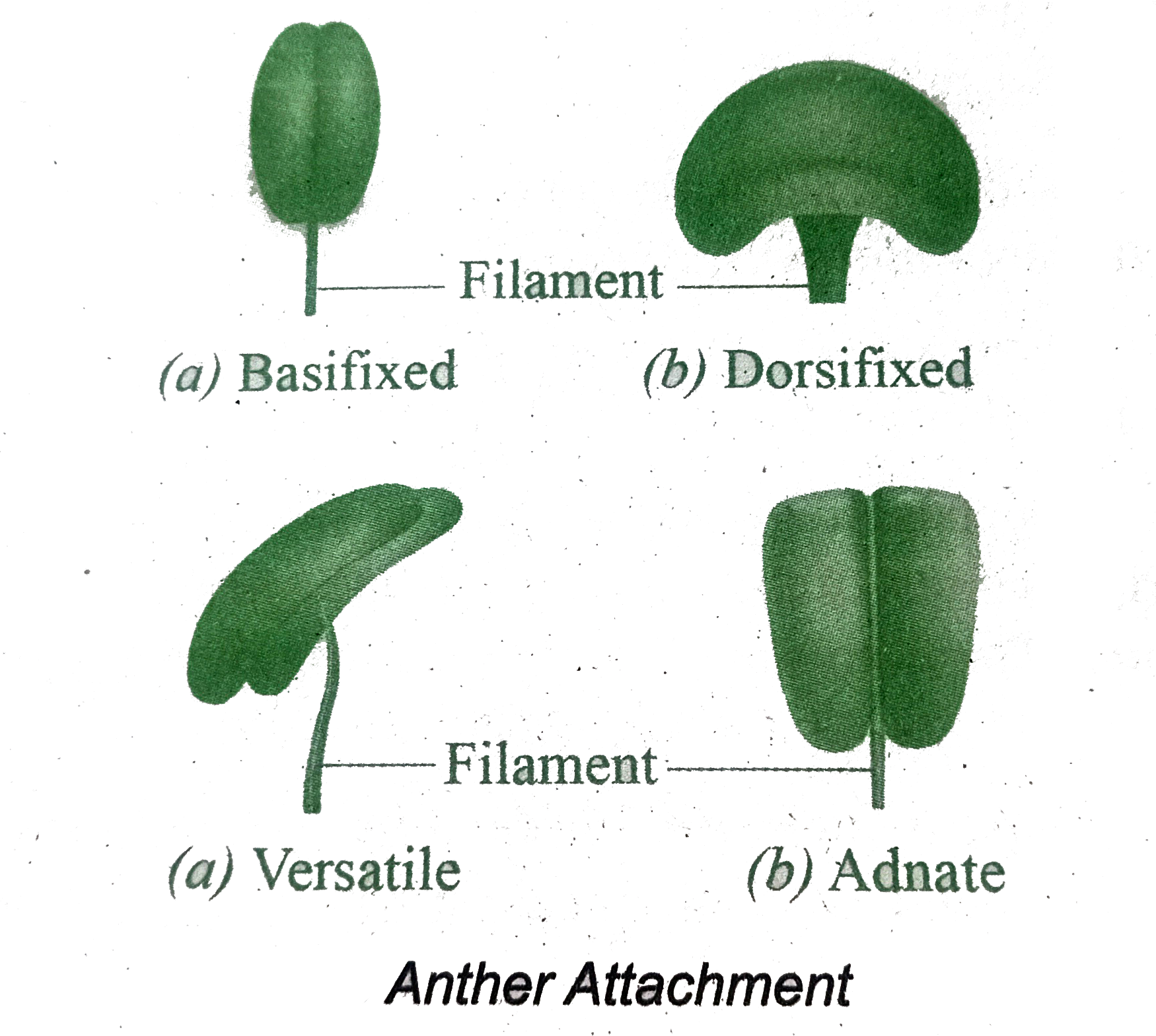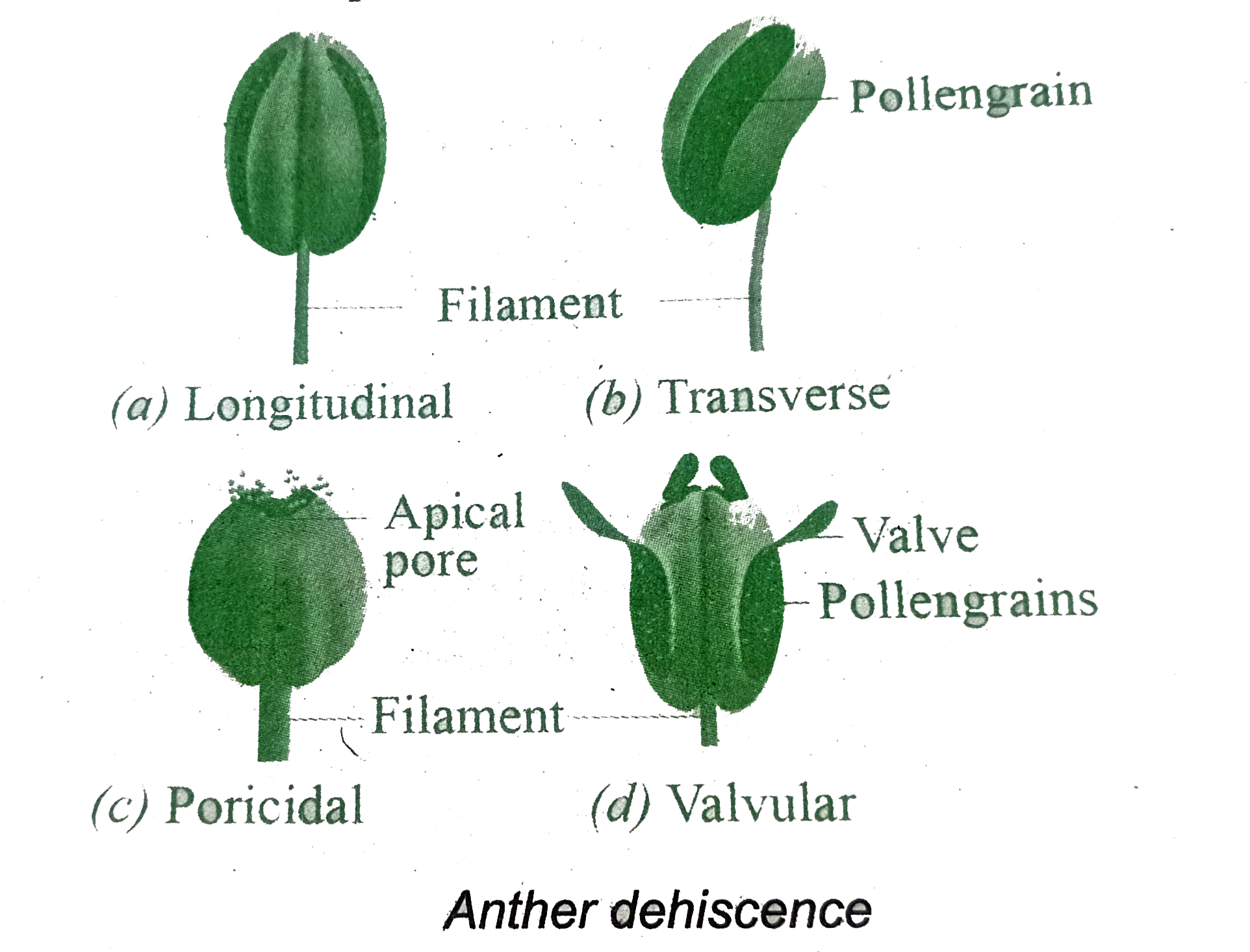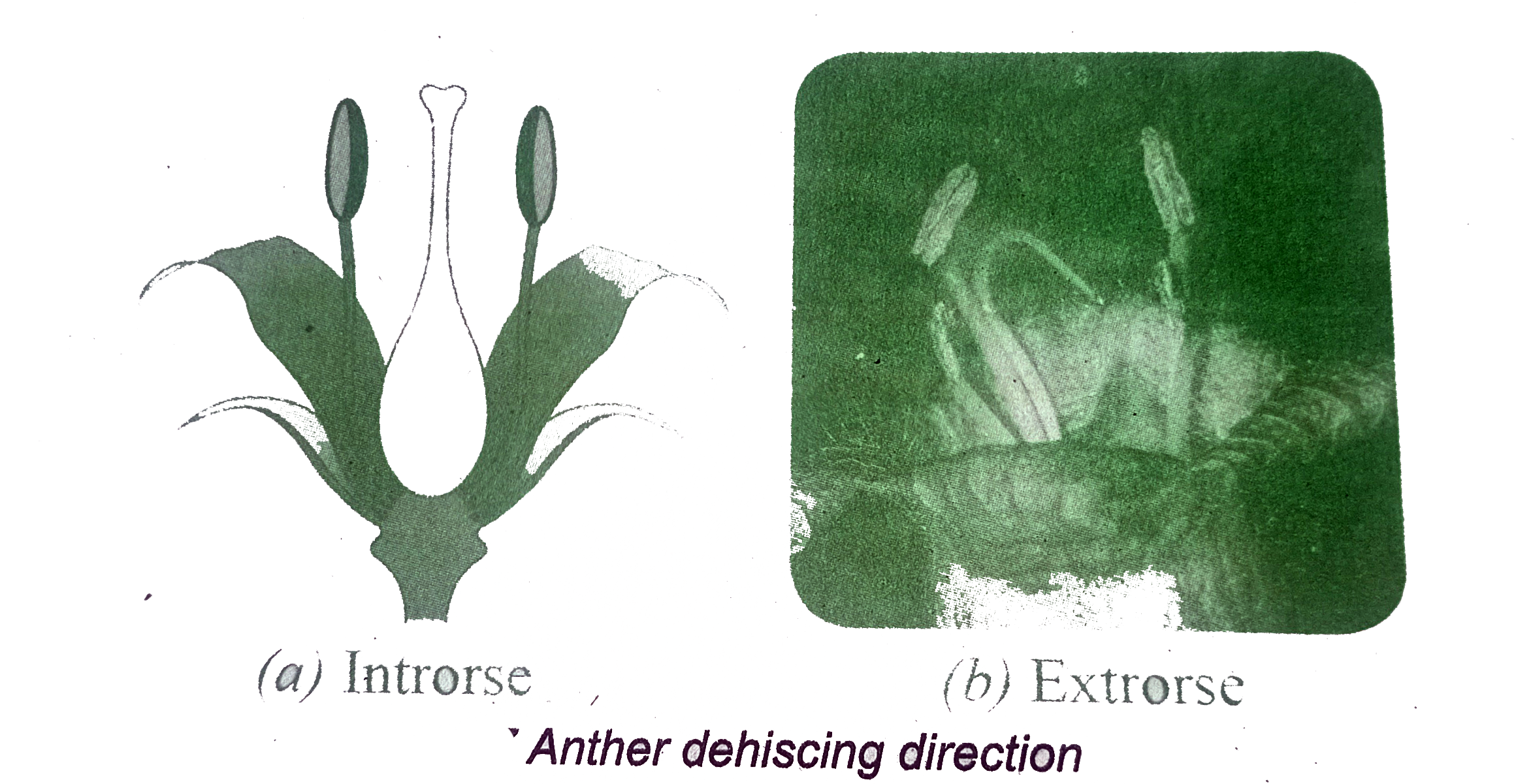Describe different types of anthers in plants.Solution in Tamil
Anther types:
(i) Monothecal One lobe with two microsporangia. They are kidney shaped in a cross section eg. Malvaceae.
on - Some other types: Haplostemonous: stamens are uniseriate and equal in number to the petals and opposite the sepals (antisepalous).
Obhaplosteinonous: stamens are uniseriate, number equal to petals and opposite the petals (antipetalous)
Diplostemonous: Stamens are biseriate, outer antisepalous, inner antipetalous e.g Murraya
.Polystemonous: Numerous stamens are normally many more than the number of petals.
(ii) Dithecal: jt js a typical type,having two lobes with four microsporangia.They are butterfly shaped in cross section, eg. solanaceae.
Anther attachment:
(i)Basifixed (Innate) Qase of anther is attached to the tip of filament, eg. Brassica, Datura.
(ii) Dorsifixed: Apex of filament is attached to the dorsal side of the anther, eg. Citrus, Hibiscus.
(iii)Versatile: Filament is attached to the anther at midpoint, eg. Grasses.
Adnate: Filament is continued from the base to the apex of anther, eg. Verbena, Ranunculus, Nelumbo.
Anther dehiscence: n refers to opening of anther to disperse pollen grains.
(i)Longitude: Anther dehisces along a suture parallel to long axis of each anther lobe. eg: datura, cotton
Transverse: Anther dehiscec at right angles to the long axis of anther lobe. e.g Malvaceae.
(iii)Poricidal: Anther dehisces through a porees at one of the cae.eg Ericaceae, salanum, potato, brinjal.
(iv)Valvular:Anther dehisces through a pore covered by a flap of tissue e.g Laurance. Cinnamomum.
Anther Dehiscing direction: It shows the position of anther opening relative to the anther of the flower
(i) Introrse: Anther dehisces towards the center of the flower, eg. Dianthus.
(ii) Extrorse: Anther dehisces towards periphery of the flower, eg. Argemone



Topper's Solved these Questions
- REPRODUCTIVE MORPHOLOGYBOOK - PREMIERS PUBLISHERSCHAPTER - REPRODUCTIVE MORPHOLOGYEXERCISE - SOLUTION TO ACTIVITY
1 Videos
- REPRODUCTIVE MORPHOLOGYBOOK - PREMIERS PUBLISHERSCHAPTER - REPRODUCTIVE MORPHOLOGYEXERCISE - OTHER IMPORTANT QUESTIONS & ANSWERS( Answer in brief)
10 Videos
- PLANT KINGDOMBOOK - PREMIERS PUBLISHERSCHAPTER - PLANT KINGDOMEXERCISE - OTHER IMPORTANT QUESTIONS S ANSWERS( Answer in detail)
6 Videos
- RESPIRATIONBOOK - PREMIERS PUBLISHERSCHAPTER - RESPIRATIONEXERCISE - CHECK YOUR GRASP! (Textbook Page No. 156)
2 Videos
Similar Questions
Prepare a diet chart to provide balanced diet to an adolescent (a school going child) which includes food items (fruits, vegetable and seeds) which are non - expensive and are commonly available.
View SolutionDistinguish between racemose and cymose inflorescence.
View SolutionExplain the asexual and sexual reproduction in algae with suitable exampl
View SolutionWhy do micro organisms respire anaerobically ?
View SolutionWhat are different types of tissues in plants ? Describe simple tissues.
View Solutionआवृतबीजी पौधो में पाये जाने वाले विभिन्न प्रकार के भ्रूणपोषों का वर्णन कीजिए
View Solutionआवृतीबीजी पौधों में पाए जाने वाले विभिन्न प्रकार के संवहन बण्डलों का चित्र की सहायता से वर्णन कीजिए |
View Solutionपुष्पी पादपों में पाये जाने वाले विभिन्न प्रकार के बीजाण्डन्यासों का वर्णन करो।
View Solutionपुष्पक्रम की परिभाषा लिखिए। पुष्पी पादपों में विभिन्न प्रकार के पुष्पक्रमों का वर्णन करो।
View Solutionविभिन्न प्रकार की रोपण विधियों का वर्णन कीजिए।
View Solutionविभिन्न प्रकार की रोपण विधियों का वर्णन कीजिए।
View Solutionविभिन्न प्रकार की रोपण विधियों का वर्णन कीजिए।
View Solutionসপুষ্পক উদ্ভিদের বিভিন্ন প্রকার আমরাবিন্যাসের বর্ণনা করো।
View Solutionपुष्पक्रम की परिभाषा करो। पुष्पी पादपों की विभिन्न प्रकार के पुष्पक्रमों के आधार का वर्णन करों।
View SolutionDescribe different types of cross pollination in plants.
View Solutionসপুষ্পক উদ্ভিদের বিভিন্ন প্রকার আমরাবিন্যাসের বর্ণনা করো।
View Solution
